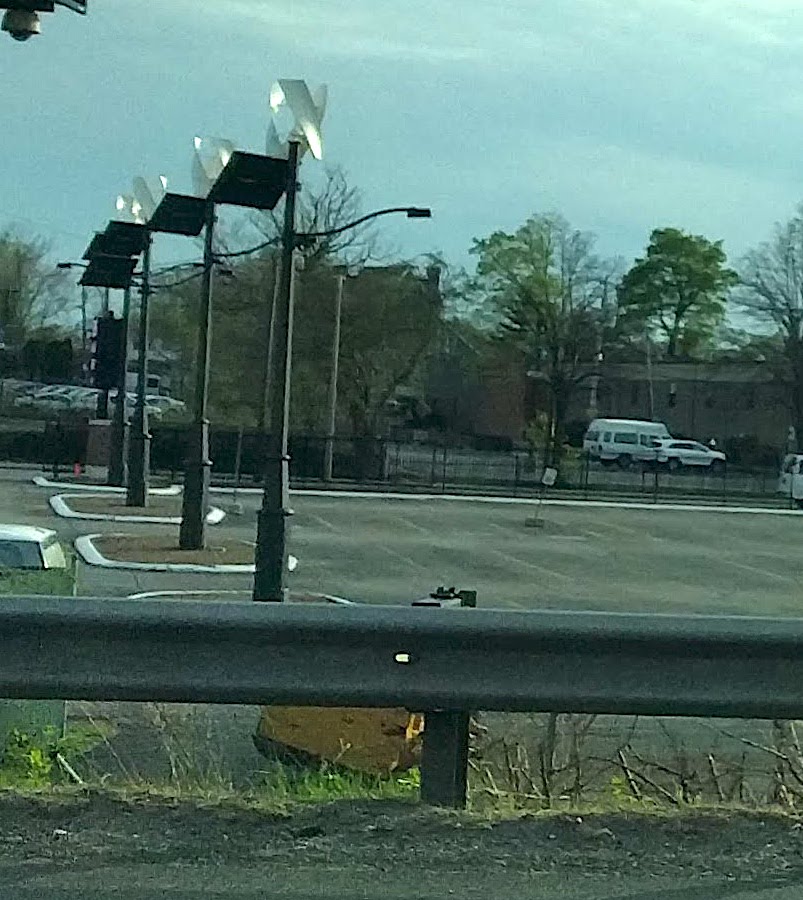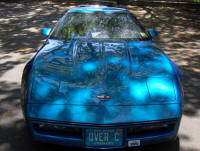RIKLBLOG
|
| Tomorrow |
| 23 Feb. 2009 |
| Yesterday |
| Index |
| Eventide |
| SETI League |
| PriUPS Project |
| Bonus! |
| Contact |


Telephone Poles
Stop me if you've heard this one:
Q: Who was Alexander Graham Kowalski?
A: The first telephone Pole.
Most of my (stolen or otherwise) jokes are a mixed curse. They may be stupid, but they're short. As hard as you may have tried, you didn't stop me in time.
Q: How many telephone poles are there in
the United States?
A: Approximately 134 million, according to the American
Wood Preserver's Association. Mr. Kowalski has been
astonishingly prolific.
Q: Is the American Wood Preserver's
Association a real organization or did you make it up?
A: It's real, although I think its directorate interlocks
with that of the Swiss Federal Yodeling Association.
Alternative Energy
According to an article in the Wall Street Journal (p. A2, 20 February 2009), The Obama administration has pledged "to double within three years the amount of wind, solar, and geothermal generating capacity in the U.S. These sources together currently account for about 1% of U.S. electricity supply.*" Wind power has a lot to recommend it. It's free. It's widely available. It's non-polluting. What it does not have to recommend it is the infrastructure expense. To tap it, you seem to need enormous windmills, turbines, generators, and transmission systems. The economics of wind power are thus mildly favorable to horribly unfavorable, depending on the proposed location and on who is doing the advocating or bashing.
I have an idea. I don't know how good it is, as is often the case. Unlike my interminable series about painting one's driveway to combat CO2, I'm going to leave this as an exercise for the student. Literally. If you're an engineering professor and happen to come across this, assign the question to your introductory class and let's see what they come up with. Don't make me do all the calculations. The idea is this: Put wind generators on the country's 134 million telephone poles!
Let's think expansively for a moment. Annual electric energy production in the United States is about 4 petawatt-hours. If we wanted to produce an additional one per cent of that from wind energy, we would need 40 terawatt hours. Divide that by 134 million wind generators and each would be responsible for 300 kilowatt-hours. There are 8760 hours in the year, so each generator need produce only 342 watts! That's not a lottawatt! Realistically, it won't be possible to mount generators on all the poles for any number of reasons, and, of course, the wind doesn't blow all the time. So let's account for these factors by arbitrarily multiplying the power required from any generator by a factor of three and so require our telephone-pole windmills to produce 1kW when the wind is blowing.
Practical or Not?
One of the great arguments for doing this is that all the power is produced locally. Remember, "telephone" poles also generally have power lines attached. They're more properly called "utility poles." If the power is injected from the generator into the local power line, no great infrastructure or grid is needed to conduct the power from an enormous "wind farm" to the point of consumption. If anything, the reverse is true and the grid interconnections will be handling less power.
On the other hand, this article explains why smaller turbines are less efficient than larger ones. Of course they're cheaper as well, but how does the cost scale with the power? As I said, an exercise for the student.
Other things to consider include the advantage of having the mounting infrastructure already in place, but contrast that with the limited lateral load withstanding capability of an un-guyed pole. Does it make sense to add guy wires, a relatively inexpensive undertaking, to allow use of larger turbines? What about local zoning regulations? Most people don't see the beauty in industrial activity that you and I do. Do you want a turbine in front of your house? My only objection would be if it were noisy, as I understand that they can be. Will it be possible to make a silent turbine? What about others' aesthetic objections? Will it be possible to get federal legislation requiring communities to accept these small turbines everywhere? Or can and should they be limited to non-residential areas? How many poles will that keep out of use if so limited?
What about making the turbines? Can we put together that much industrial capacity quickly? Not to worry - we already have it. The auto makers are shedding underutilized plants like I'm dumping newspaper clippings. These plants account for enough capacity to build millions of cars per year. Certainly small turbines are a lot easier and cheaper to build than complete automobiles! And, if I remember correctly, you and I as taxpayers have already bought and paid for the plants.
As I suggested, this is an excellent training problem for engineering students. I am not one such, but I'll be thinking about this and maybe even doing a little research. No credit for you if I come up with the answer first.
| UPDATE - 08 May 2018 | |
 |
And there you have it. My associate Jay Goldbach had his camera handy while driving home from Boston and discovered these poles with turbines and solar cells. The poles seem to have been designed for this application, rather than installing the turbines on random power poles, but at least it proves that someone thinks this makes sense. Incidentally, solar cells on power poles have been sprouting near my place of striving for many years now. |
Lawyers, Gates, and Money
I have been taking heroic steps to save horizontal space next to my computer. Far less heroic is this, involving a pair of adjoining and amusing (in their own special way) clippings from the same issue of the Journal quoted above. Clippings received yesterday, quoted and discarded today. No horizontal surface wasted at all!
 |
At the left, we find that in India some lawyers set fire to
a police station. Of course in this country, it's normally
the students or other protesters doing the damage and the
lawyers representing them. India has learned an
important lesson about efficiency and has cut out the middle
man! On the right, we find that the occasionally reviled philanthropist, Bill Gates, is sending money to Africa. Why? To help the farmers grow their cocoa crops more efficiently! My hero! |
 |
* We all realize, do we not, that all of these sources are fundamentally nuclear?
|
Special Advertising Section Please buy this lovely blue Corvette ZR1!
|
 |
NP: "This Strange Engine" - Marillion
| © 2009 |
| Richard Factor |
